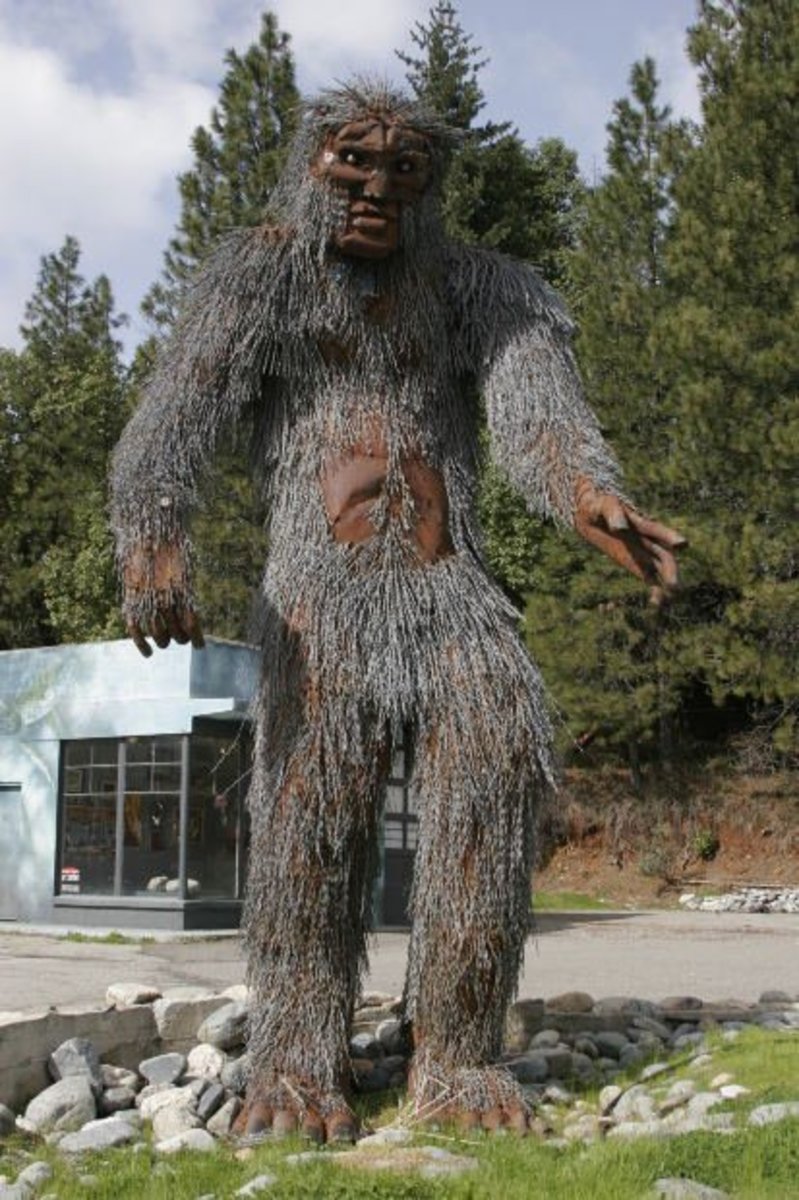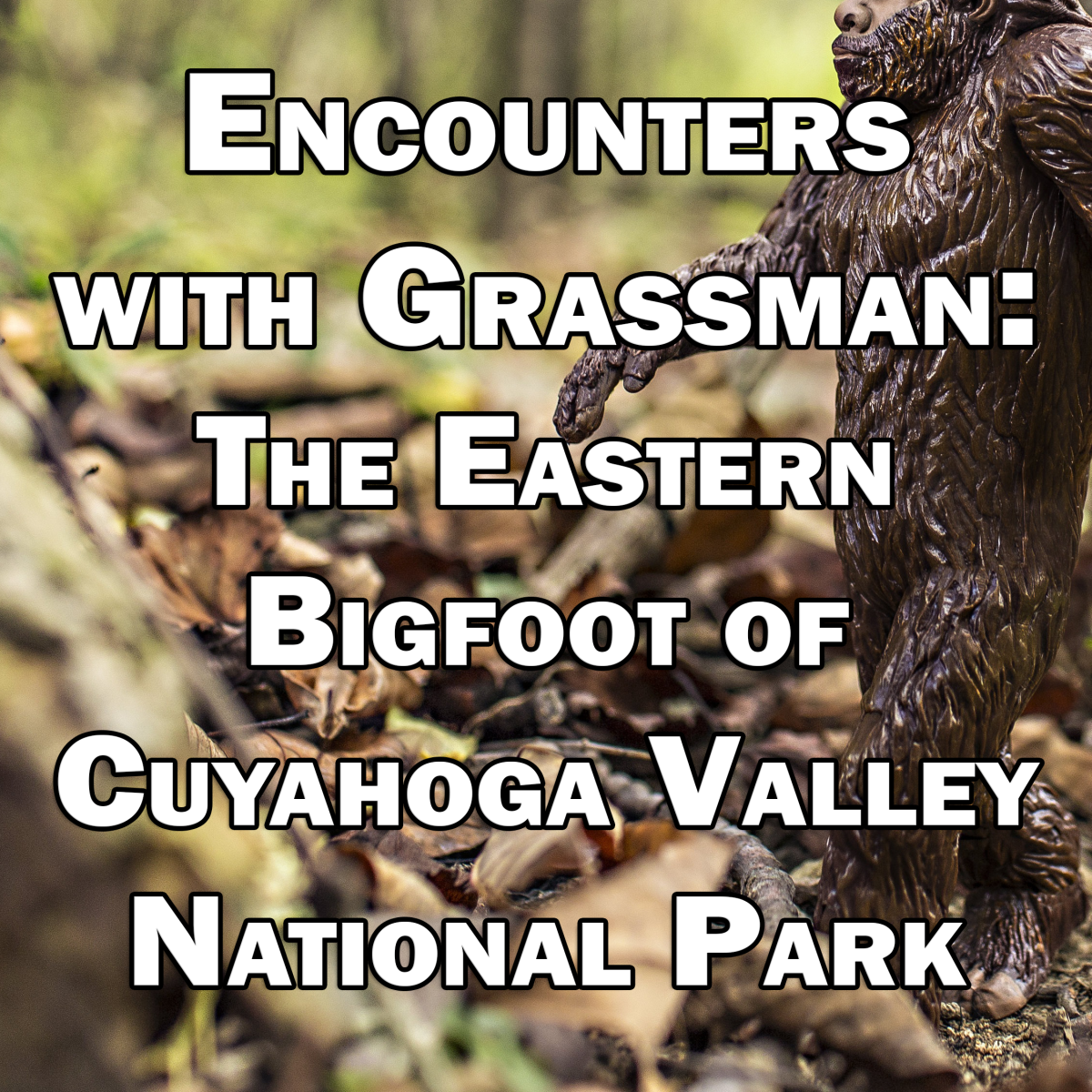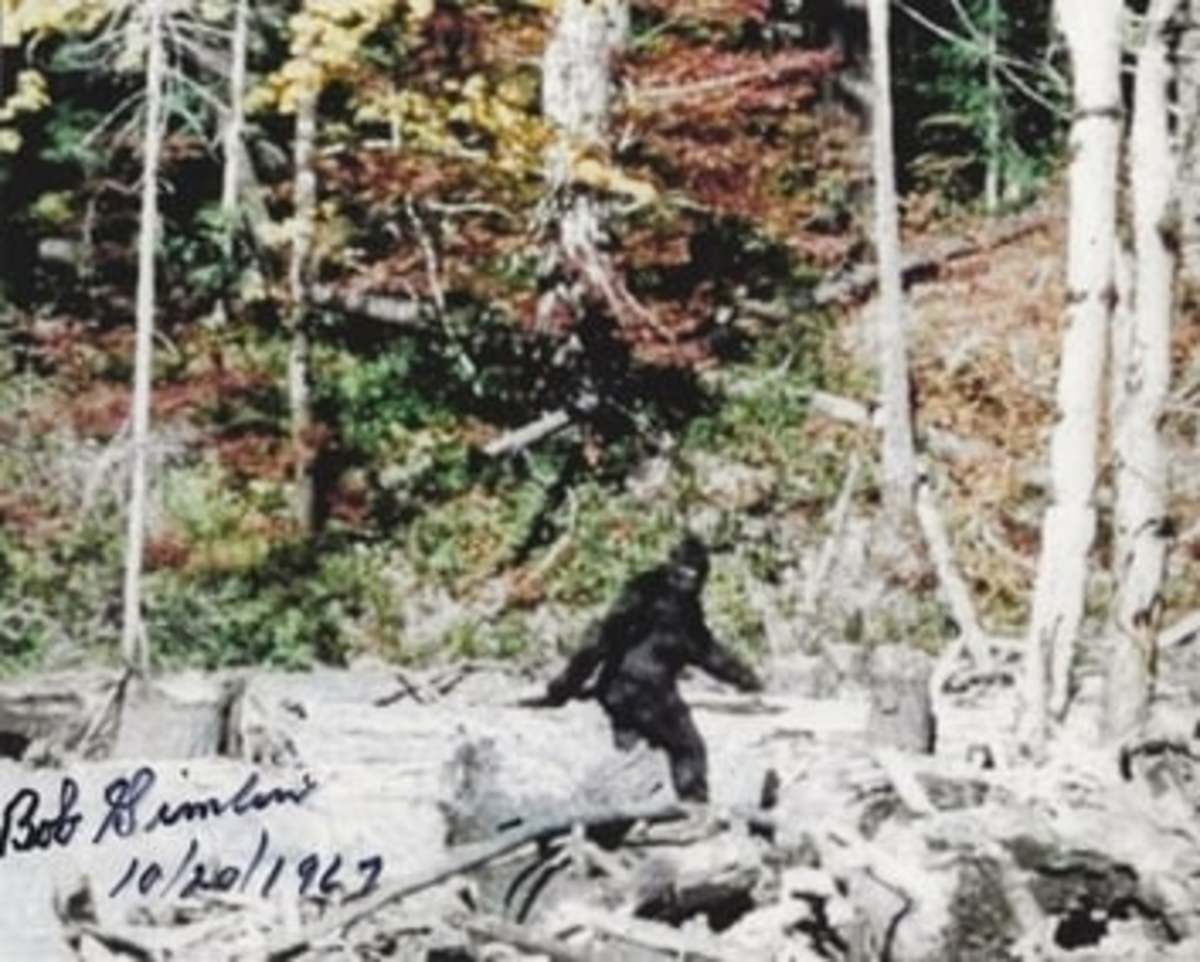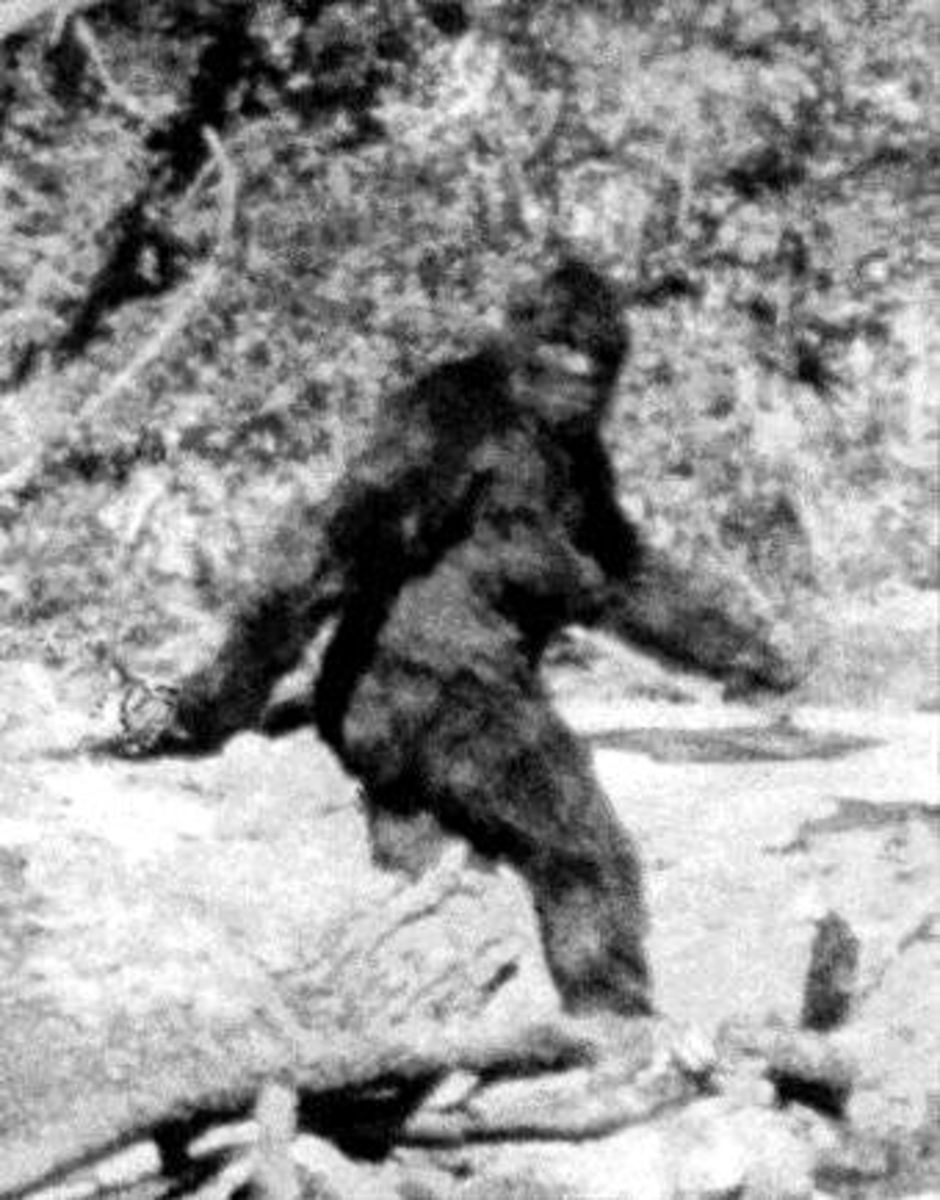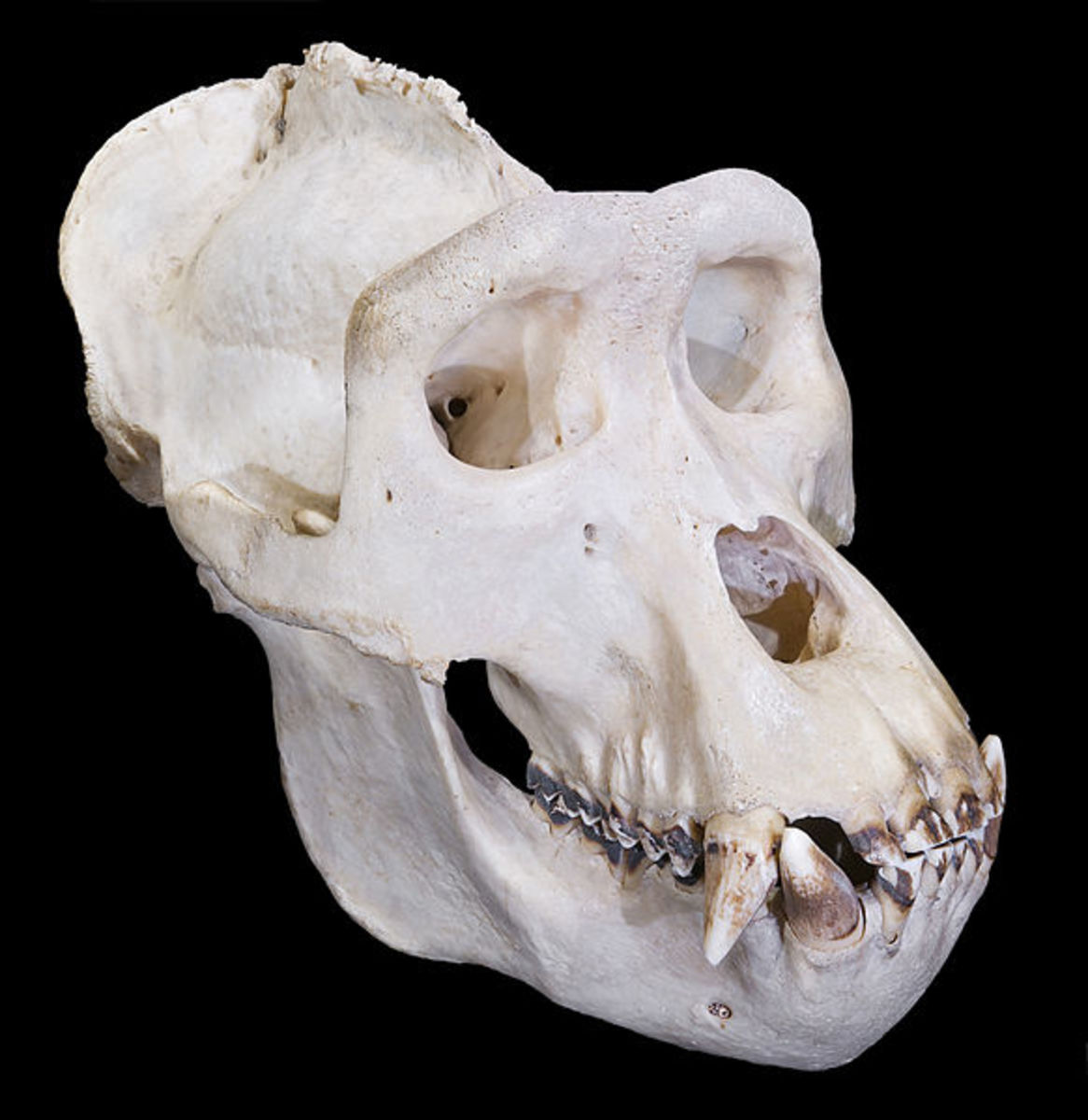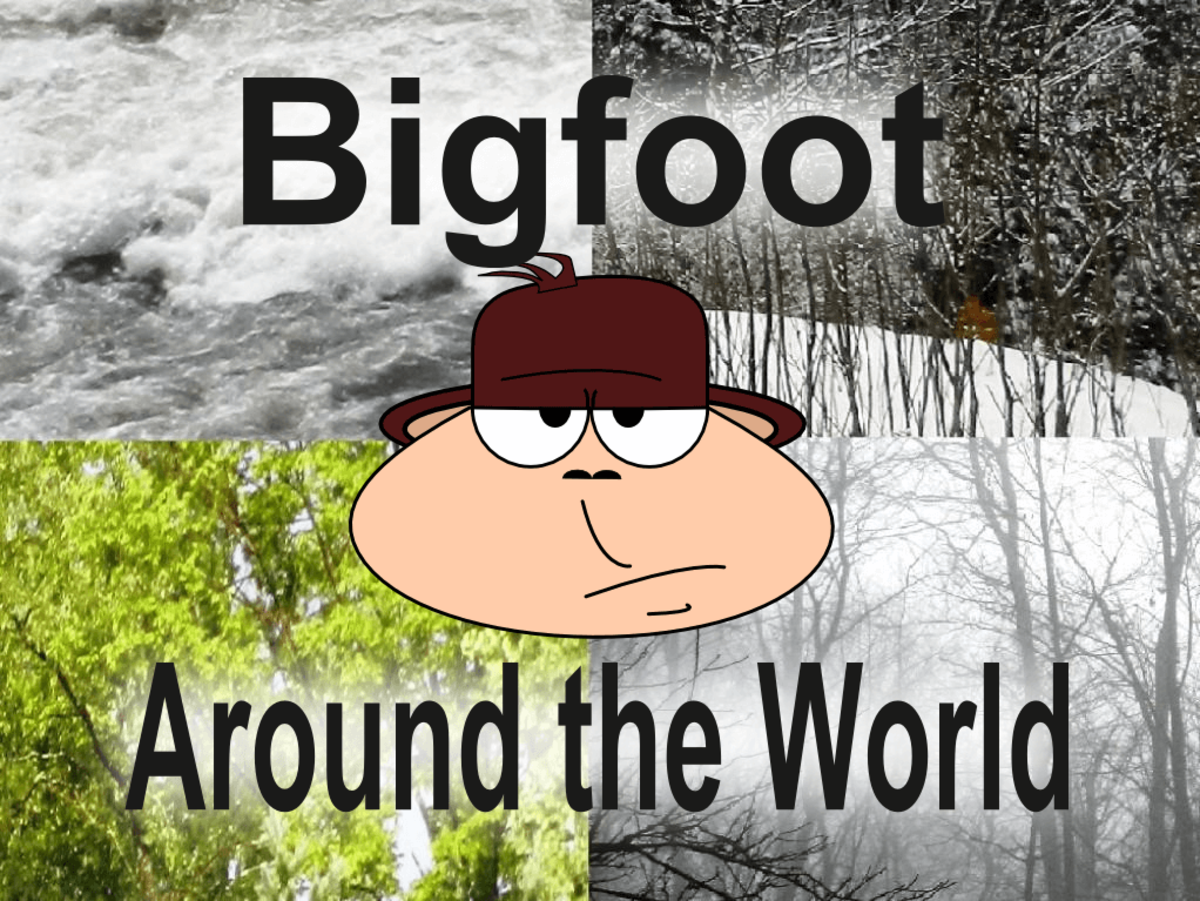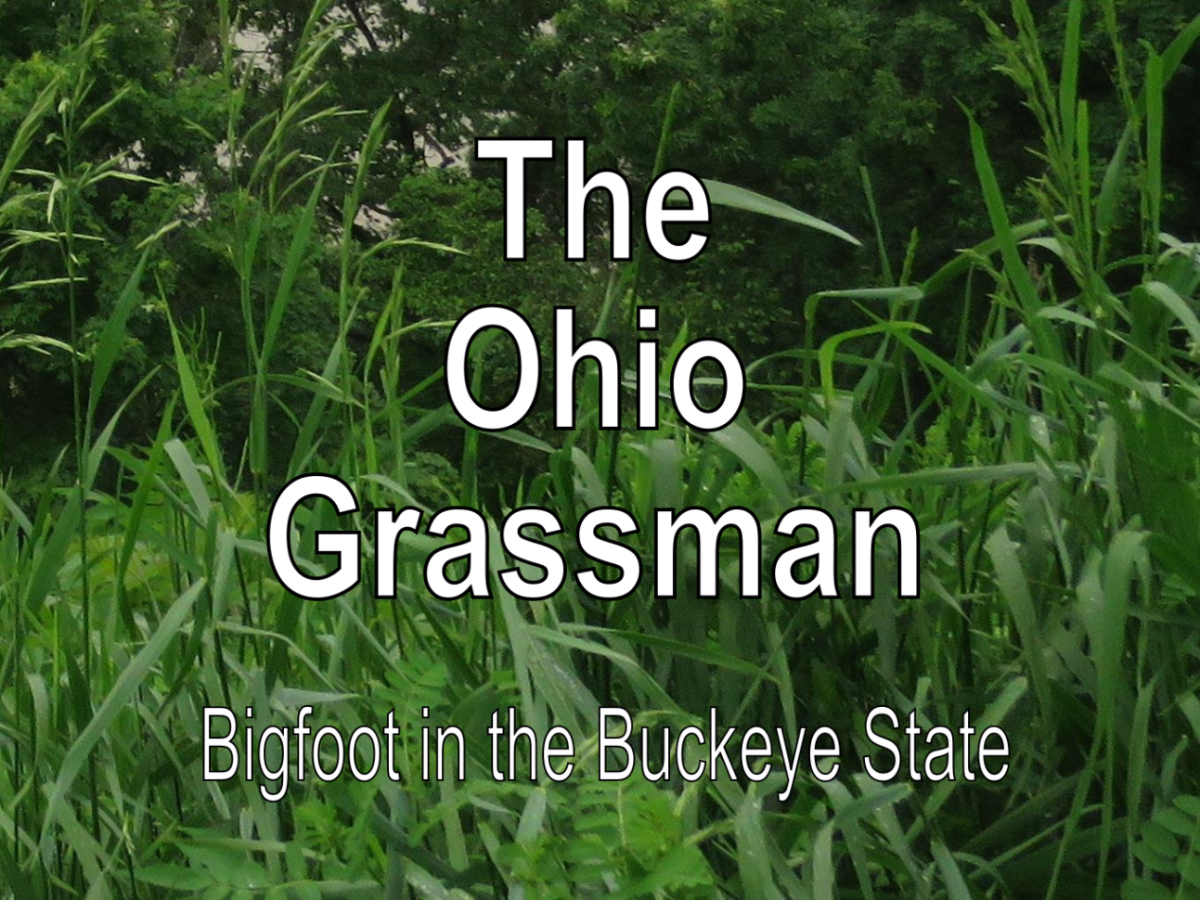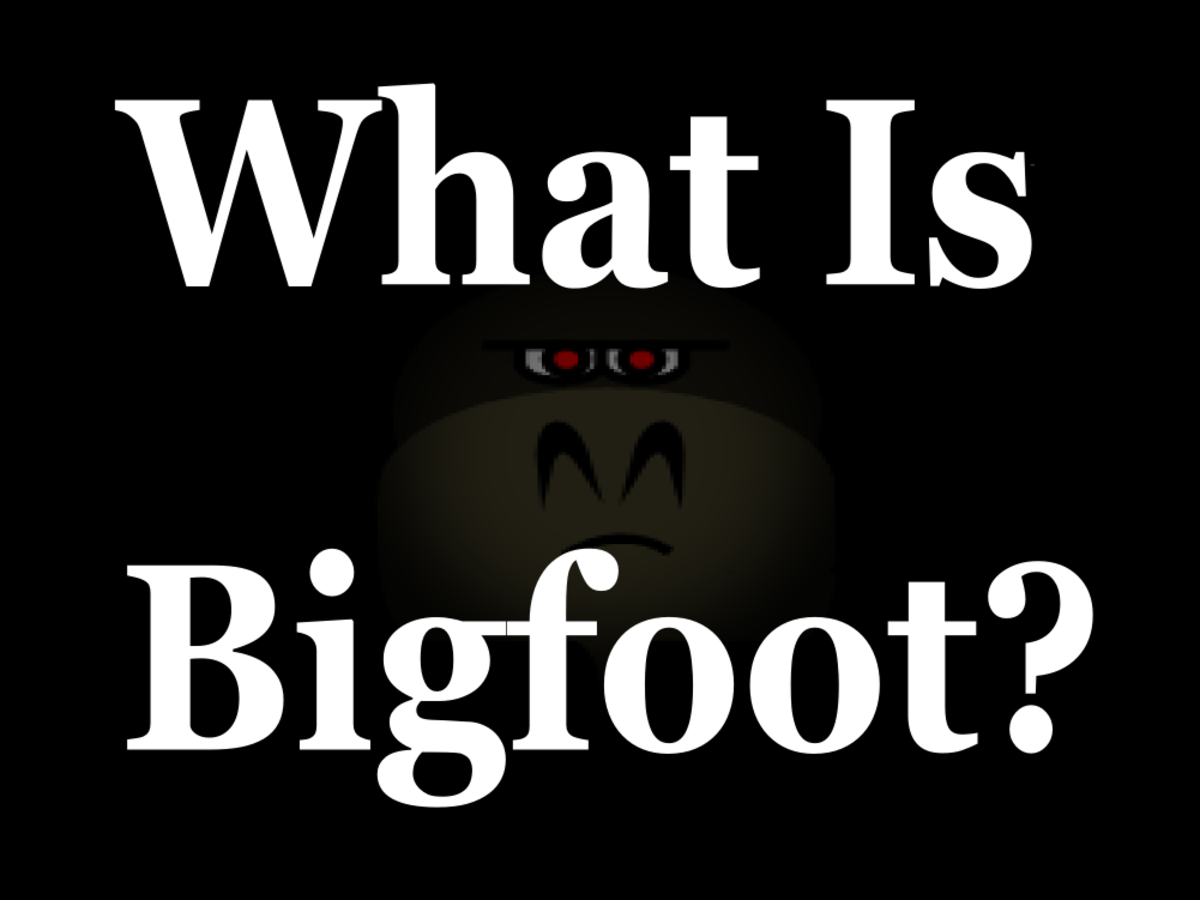- HubPages»
- Education and Science»
- Sociology & Anthropology»
- Folklore & Mythology»
- Legendary Creatures & Cryptids»
- Forest Creatures
Bigfoot Across the Country: Five Local Legends
Bigfoot legends can be found all across the United States of America. Sometimes they’re called Bigfoot, but other times it’s a monster or a beast, or in some cases, even a booger.
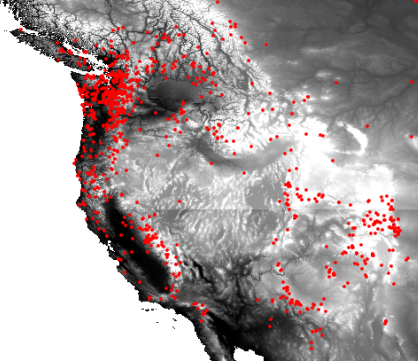
The Bardin Booger
In the small town of Bardin, Florida, there is a legend that dates back to at least the 1940s.
In one of the earliest tales, taking place in the summer of 1947, a woman was riding her horse through the woods when she spotted what at first appeared to be a large man wearing a raincoat. However, upon closer inspection, she realized that the raincoat was actually a thick covering of fur, and that the figure was not a man at all. The creature that this woman had just encountered would become known locally as the Bardin Booger.
Reports of the Bardin Booger don’t always consistently describe it. Sometimes it’s humanoid in the way that one would expect of a Bigfoot-like creature, but at least one report describes it as bear-sized, with a pig nose and a long red tongue. However, most stories agree on certain details — it’s tall and covered in fur, and, most strikingly, it gives off a rotten smell.
One story of a Booger encounter features a man who attempted to aim his rifle at the creature, but was unable to focus on holding his gun steady due to the smell. The stories of the awful stench given off by the Bardin Booger lead some to speculate that it’s actually a skunk ape, another Bigfoot legend told across Florida.
Some theories have been thrown about as to the Booger’s origins, given the assumption that there is actually something lurking in Bardin. Other than it being a Bigfoot native to the area, there is also s theory that it is the descendant of an escaped circus monkey whose offspring grew larger over several generations until they somehow became ten feet tall.
The legend of the Bardin Booger was very localized until 1981, when stories written by journalist Jody Delzell first began to spread. Delzell was credited with naming the creature, intending “booger” to indicate that it was a boogeyman figure. The increased awareness brought outsiders to the town, some of them being monster hunters, while others were pranksters looking to mock locals. Sightings of the Bardin Booger would increase, with Delzell continuing to publish stories about the legend.

One local resident in particular took advantage of the notoriety. Bud Key, the owner of Bud’s Grocery, decided to use his store as the headquarters of Bardin Booger hunting and research. In addition to selling merchandise, Bud also maintained a “Booger file” of stories and news clippings. The stories included sightings from residents claiming the Booger carried a lantern through the woods, someone who saw it stealing clothes off a line, and an account of the Booger carrying out a raid on someone’s refrigerator.
Another local couple decided to use the legend in a different way. Billy and Lena Crain would dress up as the Bardin Booger and play music, with Billy having written a song called “The Bardin Booger’s Christmas Wish.” After Billy’s death, Lena continued the tradition they started, now playing a recording of the song instead of giving a live performance. In an interview with Jacksonville.com, Lena was quoted as saying, “The Booger is not a scary creature. The kids love him and I want to keep it that way. I would hate for anyone to think of the Booger and be frightened.”
The costume aspect of their performance has led some to claim that a few sightings may have been one of the Crains in their suit, but this seems unlikely given their focus on keeping the Booger fun instead of scary.
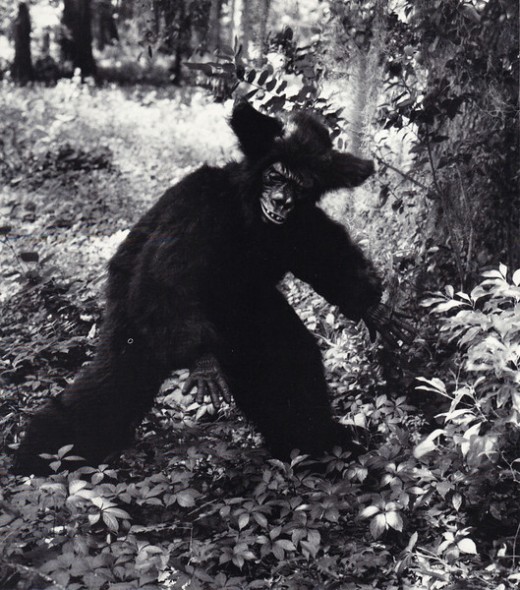
The Wood Booger
There’s another booger out there, reportedly living in the forests of southwest Virginia. And like the Bardin Booger, its name is derived from “boogeyman,” in reference to a rumor that it carried off children.
Virginia’s Wood Booger has several traits that have been associated with many Bigfoot stories. It is tall, bipedal, has red eyes, is covered in black hair, and smells terrible. It has a slouchy walk, makes noises that can’t be identified as another local animal, and, according to some witnesses, throws rocks. One aspect that is occasionally attached to the Wood Booger legend that differentiates it from many other Bigfoot stories is the idea that the children it carries off are later transformed into more Wood Boogers.
Though sightings have occurred in other places, Norton, Virginia is known as the primary home of the Wood Booger. In 2011, Animal Planet’s show Finding Bigfoot filmed in the town, and not long after, the town installed a statue of the creature in the Flag Rock Recreation Area and designated the area a “Woodbooger Sanctuary.”
Norton has seen an increase in tourism between the Finding Bigfoot episode, the inaugural Woodbooger Festival in 2014, and the statue’s installation in 2015. As in many towns where a cryptid sighting has been publicized, local businesses have capitalized by selling merchandise, and guided tours of reported sighting locations are on offer to visitors.
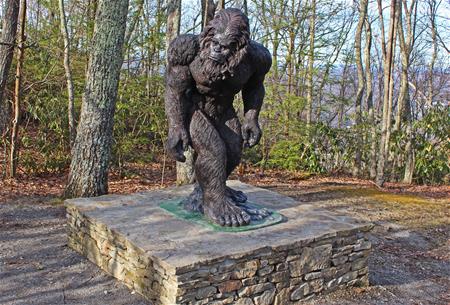
The Beast of Whitehall
Residents of Whitehall, New York have reported sightings of a creature standing about seven to eight feet tall and weighing between 400 to 800 pounds — depending on who is telling the story — with red eyes and a “terrible scream,” who is also sometimes known to toss giant stones at witnesses.
Although some sources, including an episode of MonsterQuest, claim that sightings have occurred for over 100 years, the reported accounts considered to be more credible seem to begin in August 1976, with a police officer named Bryan Gosselin. Gosselin claimed he saw a large creature while he was just outside town, and that he wasn’t the only one with this experience. His father, brother, and fellow officers, including one in particular named Dan Gordon, had all had similar encounters. Gosselin detailed his experience along with accounts from others in his 2018 book Abair Road: The True Story.
Another collector of Beast sightings is Paul Bartholomew. He has been contacted by multiple witnesses who have told him their stories, including one from an unnamed motorist who described the creature they encountered as “more than 6 feet tall with long arms, hardly a neck to speak of and broad shoulders.” The creature then climbed over a guardrail before vanishing. Bartholomew has investigated the site of this encounter in the past and allegedly found prints that were 12 feet long and 5 inches across.
Whitehall has embraced having their own Bigfoot legend. They have installed statues, started an annual Bigfoot golf tournament, and held a Sasquatch Half Marathon and 5k. In 2017, the town began an annual Sasquatch Calling Contest and Festival, and the following year, Bigfoot was named the “official animal” of Whitehall.
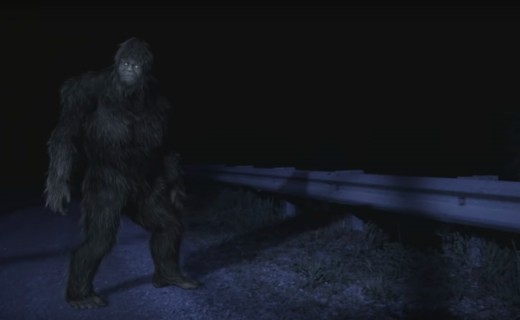
The Dewey Lake Monster/The Sister Lakes Sasquatch
In June 1964, residents of Dowagiac, Michigan, in particular those around Dewey Lake in the Sister Lakes area, began to report sightings of a creature that was ten feet tall, 500 pounds, and possessing glowing eyes. Police would search the area of the sightings but ultimately find nothing. Due to there being an official investigation, reports of a monster sighting spread outside of the local community, with coverage appearing in national newspapers.
Monster hunters came to the area, as did reporters. Taking advantage of the influx of visitors, some locals took to selling “monster hunting kits.” A Chicago newspaper, writing on this phenomenon, mocked Dowagiac, dubbing it “Monster Town USA” and painting residents in a negative light. Even years later, in 1983, the South Bend Tribune would publish that the creature was imaginary, thought up by “intoxicated strawberry pickers.”
The creature that is now known as the Dewey Lake Monster or the Sister Lakes Sasquatch does have some distinctive traits to differentiate it from yet another Bigfoot sighting. Wendy Alexander, a native of the area, described it as a creature that was at least somewhat aquatic, as it appeared to swim beneath the surface of the lakes during the day, only emerging at night. Once nightfall comes, it would emerge and reveal itself to be scaly with claws, along with a cone-shaped head. Alexander also claimed it was very aggressive, and was known to have smashed or overturned cars.
As with many regional Bigfoot legends, the area in which it was sighted has embraced it. In the 2016 Dewey Lake Boat Parade, the Sister Lakes Sasquatch was celebrated, and local brewery Sister Lakes Brewing has named a beer after the creature.
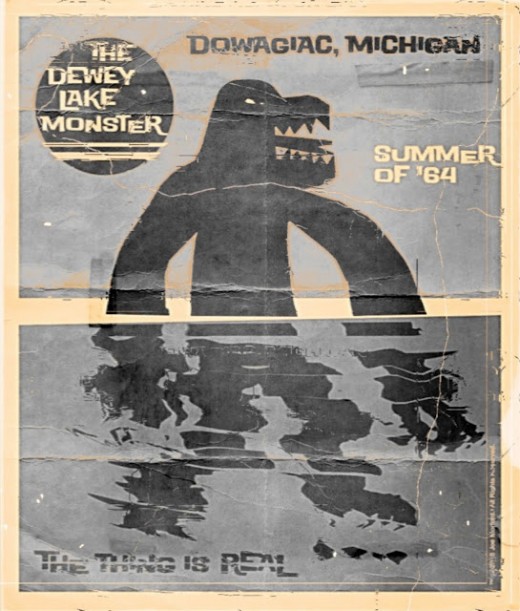
Wood Devils
Wood Devils are a bit different to the other Bigfoot legends on this list, as there is some debate as to whether or not it should be considered a Bigfoot variation at all. To start, Wood Devils are usually spoken about in plural, as opposed to the many regional Bigfoot stories that describe sightings of a solitary creature. Like Bigfoot, they are tall and covered in shaggy hair, but they are also skinny enough that they can hide behind trees unnoticed.
Wood Devils are often compared to Hidebehinds, a fearsome critter of old lumberjack tales. However, while both creatures are described as hiding behind trees, Wood Devils seem to want to be left alone. Hidebehinds, in contrast, are aggressive, using their skills to stalk and hunt people who are unfortunate enough to come across them in the woods.
Wood Devils will reportedly attempt to stay behind a tree when a human is near, but if there is no cover available, they will stand perfectly still out in the open. This seems to be a viable strategy, as some witnesses report that they have almost walked into the creatures before seeing them. On occasions where Wood Devils are seen, they will “emit awful, heart-wrenching screams.”
Wood Devils have primarily been seen in Coos County, New Hampshire. It’s perhaps unsurprising that this area has quite a bit of dense wilderness, making it an ideal place for tales of hidden creatures residing within the forest.
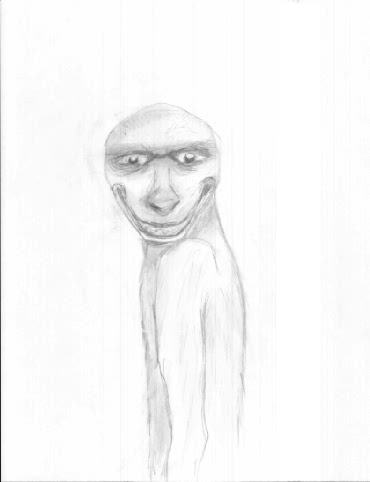
In towns all over the country, you’ll find local entrepreneurs capitalizing on the stories of their local monsters. Anywhere you look across the United States, you can likely find a nearby local Bigfoot legend.

